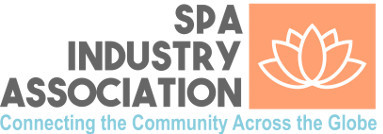
There are multiple examples of companies that swoop in time to salvage a situation that would have otherwise escalated to a PR nightmare. Better still, some of these brands go on to capitalize on the negative situation through superb customer service.
You can’t risk sending in the wrong tweet or even ignoring a negative review or, worse, replying rudely in the digital era. It has happened before, and some of these companies have come to regret the decision later. Taking stock of each strategy, just like in the book of Ra is of paramount importance.
Well, if there’s no harmonization of your overall customer acquisition and retention process, discrepancies are bound to arise. There has been a paradigm shift from customers sending complaint letters to a single customer tweet going viral.
In fact, a single customer negative review may lead to a loss of 22% of your clients. If more customers do so, can you imagine how many you end up losing?
One way you can solve this for your brand is to create customer journey mapping.
Customer Journey Mapping
Customer mapping helps you understand customer needs. Every existing or potential customers can find the information they need, and a seamless transition to the next level is easily achieved. The process is executed in a few steps that can be expressed in a funnel format below.
1. Awareness
During this stage, the customers are aware that they have a problem and need a solution. Most probably, they’ll search through search engines or social media.
In this case, algorithms will send the relevant ads. The keywords the customers use will determine the user intent. Similarly, your ad copy should consider user intent.
For instance, a client may be searching for “best exercise shoes.” As an introduction, you should go in soft, with offers, more information about the product before going in for the hard sell.
The concept is similar for a B2C or B2B. The landing page should aim to provide relevant information without directly selling the product or services. The information they take in should be persuasive enough to make them move to the next level.
2. Consideration and decision-making
Typically, the number of people reduces as you advance in the customer journey. Here, you may have email or even contact information you got from the awareness stage.
That said, the customer is still undecided on whether you are the right choice. They are still comparing different price points, and product offers with your competitors. During this stage, you can make ads that market your brand, pricing, and products.
Using their email from the previous stage, you can share more about your product or services with customers. The idea is to make them understand your product, pricing points before they can decide.
You need to answer questions such as: why is your product better than the rest? Why have you priced your products or services the way you have? What benefits will the customer gain by purchasing the product or service from your company?
Some of the best content that increases the rate of customer acquisition in this stage includes demos, case studies, webinars, tutorials, and free trials.
Ultimately, it would be best if you distinguish your brand from the competitors. Convince the clients why they need to settle on your product or service.
3. Conversion and retention
If you’ve made it this far, you are doing okay. Clients may request a demo or free consultation to know more about the product or service. Remember, you have to ensure their doubts are dispelled as they decide to purchase from you.
Once they make the purchase, you advance to the retention stage. It is not a one-time thing, rather a continuous process until the client is no longer buying from you.
The customer experience is enhanced through your social media pages, FAQs section, knowledge base, support page, and emails. You need to help your customer achieve success during the retention stage.
In this stage, give prompt responses when customers request information. You need to be on top of your game as far as enhancing customer experience is concerned.
If you have a different offering or pricing, this is the best stage to introduce that.





